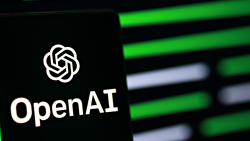Darwin2049/chatgpt4 omega evolutionary
Revision as of 00:47, 23 September 2023 by Darwin2049 (talk | contribs)
OpenAI - ChatGPT4.
In what follows we attempt to address several basic questions about the onrushing progress with the current focus of artificial intelligence. There are several competing actors in this space. These include OpenAI, DeepMind, Anthropic, and Cohere. A number of other competitors are active in the artificial intelligence market place. But for purposes of brevity and because of the overlap we will limit focus on ChatGPT4 (CG4). Further, we focus on several salient questions that that raise questions of safety, risk and prospects.
Specifically, risks that involve or are:
- Interfacing/Access: how will different groups interact with, respond to and be affected by it; might access modalities available to one group have positive or negative implications for other groups.
Interfacing - Synthesis. - Evolutionary/Stratification: might new classifications of social categories emerge; were phenotypical bifurcations to emerge would or how would the manifest themselves.
In general when we refer to evolutionary changes or adaptations our thoughts tend to gravitate toward periods of time that are measured in very long spans of time. This has been by and large because changes have been based upon natural selection acting upon hereditary adaptation to changed internal or external conditions. In the current context we envision changes happening as a result of competitive pressures operating in a new if artificial environment. That environment is a creation of the combination of social-cultural-economic forces interacting with scientific-technological developments. These forces each operate with their own imperatives and they each have their own feedback mechanisms. Based upon our research to date we foresee evolutionary pressures to use CP capabilities to gain and sustain competitive advantage comparable to those that condition natural selection and survival of the fittest. On the horizon several developments have come into focus that suggest further refinement and inclusion.
- Cognitive Augmentation. Users will have access to a cognitive prosthetic using multi-modal channels. These include both visual as well as voice.
- Temporary Psycho-active Enhancements. Neurological research has provide very accurate maps of the structures involved in long term memory formation. These can be used as targets for psycho-actives that facilitate newly learned memories. With enhanced activation of these structures the ability to rapidly learn new skills and talents would become possible. The movie Limitless from 2011 portrayed an aspiring writer who was given an experimental psycho-active. The bag of pills that he was given proved able to dramatically enhance his ability to recall information and retain it with a single exposure to the material. He was able to learn new languages and speak them with stunning fluency. His ability to selectively focus on a topic or subject and remain in a comfortable state of awareness and attention proved to be far beyond anything that he had experienced or known anyone else to experience in their normal waking states. It is therefore not far fetched to imagine that psycho-actives can be designed and fabricated that enable selectively targeting the pathways responsible for long term memory formation and consolidation. An individual with the ability to rapidly learn and retain new knowledge on extremely short notice would be indistinguishable from any other person that one might encounter. But that person would possess selective advantages extremely well suited in navigating an increasingly technical reality.
- Long Term Psycho-active Enhancements.
- Permanent Psycho-Physical Modifications.
- Always-On Collaborative Problem Solving. On any given day a tour through your local supermarket while shopping will bring one into proximity with someone, familiar or stranger who is engaged in a conversation with someone else via their mobile phone and an ear piece that connects wirelessly to their mobile phone. Essentially they are engaging in an "always on" state of collaborative engagement. In some cases they might even be engaging in collaborative problem solving. The task might involve selecting primary elements for an upcoming dinner or social event. Or it might involve looking for alternatives should the preferred items be absent. There might be a time pressure. So there can even be a three way conversation. When users of the Zoom online conferencing tool bring multiple individuals together they are engaging in collaborative problem solving. The tool itself allows for sharing of video, voice as well as screen content. The nature of the protocol that Zoom uses might in future releases allow for multiple screen sharing. When a cognitive prosthetic with voice control is incorporated into the picture then we have the basis for having considerably enhanced cognitive augmentation. Again... a casual glance might reveal little or nothing about the fact that the individual configured to use this set of resources might not merit a second glance. But their ability to engage with others as well as one or more CP's would position them to be able to respond in ways that a person without that kind of infrastructure would not.
- Epistemological/Ethical relativism: how to reconcile ethical issues within a society, between societies; more specifically, might it provide solutions or results that are acceptable to the one group but unacceptable to the other group; recent attention has been drawn to the evidence that a LLM such as CG4 may begin to exhibit sycophancy in its interactions with a user; even if the value stance of the user can be considered as an equivocation.
